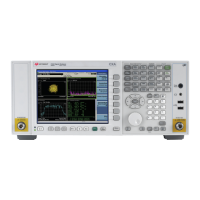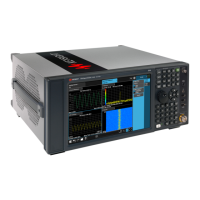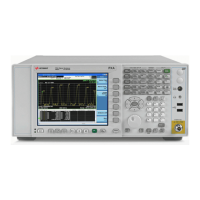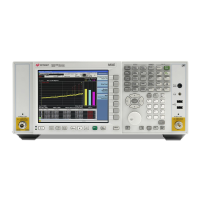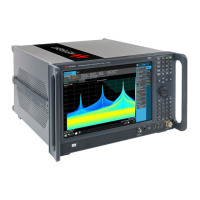67
Boot Up and Initialization Troubleshooting
Potential Problems During Boot Process
Narrow Band Step Cal Ad justment Alignment
Algorithm
Recalled adjustment from calibration file. (Option B40)
Alignment signal
originates on A3 D-IF,
then goes through A16
Reference, through A13
Front End, through A2
Analog IF, and back to
A3 Digital IF.
DIF 40 Step Cal Adjustment Alignment
Algorithm
Recalled adjustment from calibration file. (Option B40)
Since this is wide band
alignment done for
40 MHz BW signal
path, A2 Analog IF is
not included in the
signal path.
Narrow Band Step Cal Alignment Algorithm
DIF 40 Step Cal Alignment Algorithm
(Option B40)
AIF 160 Band 0 Chirp Cal Alignment Algorithm
(Option B85, B1A, B1X)
A25 Wide band A-IF
AIF 160 μW Band Chirp Cal Alignment Algorithm
(Option B85, B1A, B1X)
A25 Wide band A-IF
E Cal Path System Gain Algorithm
Measures the amplitude error of the low band signal
path by injecting the 50 MHz E-Cal signal into the A13
Front End assembly. The E-Cal signal originates on the
A16 Reference assembly.
Signal path from A13
Front End to A3 Digital
IF
A16 Reference may not be
providing 50 MHz E-Cal
Low Band Nominal Path System Gain
Algorithm
Aligns low band (3 Hz to 3.6 GHz path) with preamp and
electronic attenuator OFF. Dependent on successful
E-Cal alignment.
Input attenuators set to 10 dB and DC coupled.
A13 Front End 50 MHz calibrator on A16
Reference.
A9 and A10 Input attenuators
Low Band Preamp Path System Gain Algorithm
Aligns low band (3 Hz to 3.6 GHz path) with preamp ON.
Input attenuator set to 20 dB.
(Options P03, P07, P32, P44)
A13 Front End 50 MHz calibrator on A16
Reference.
A9 and A10 Input attenuators
Table 2-2 Initial Alignments
Alignment Description Most Probable
Hard ware Failure
Related Hardware
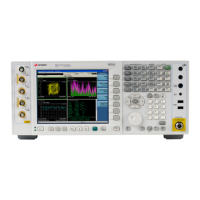
